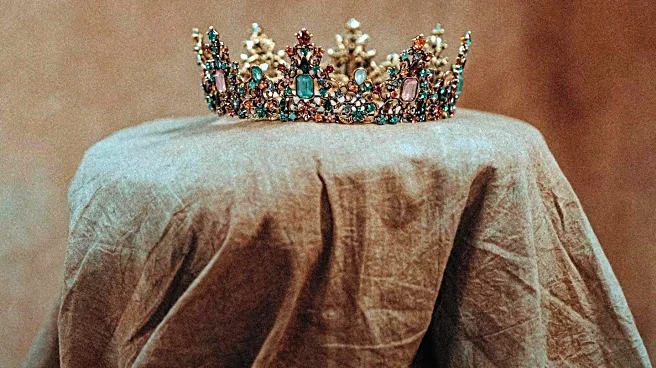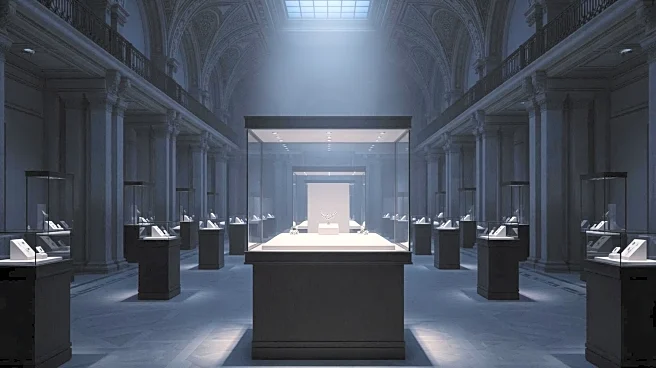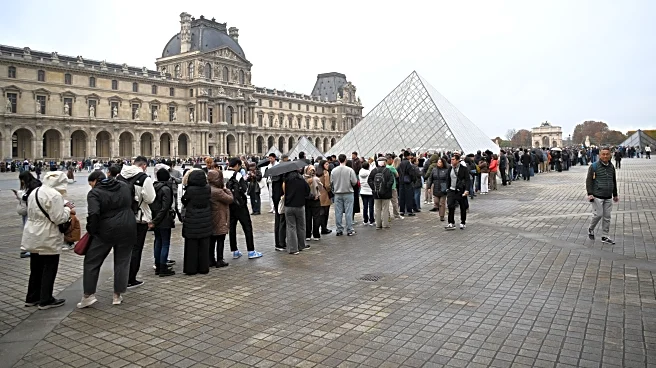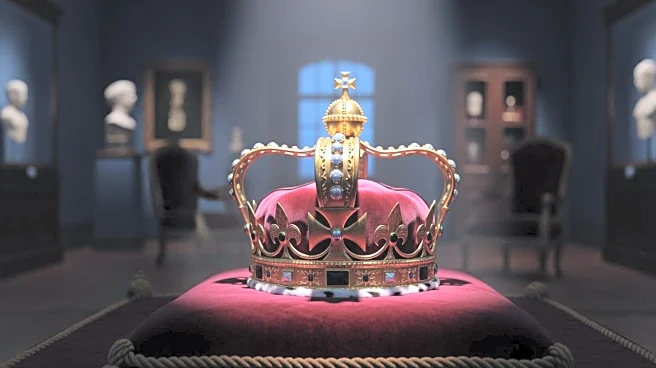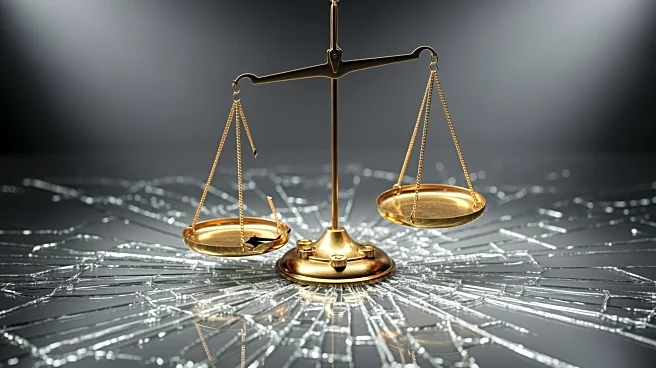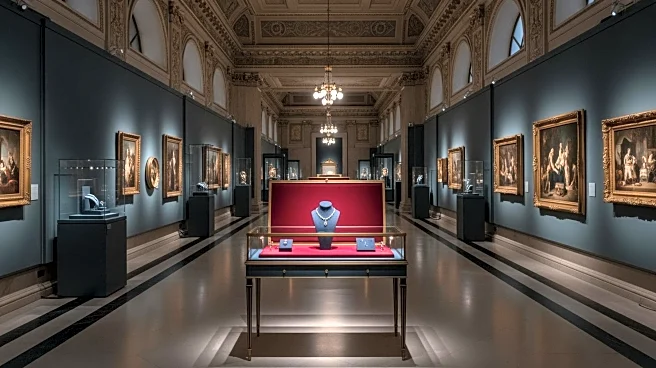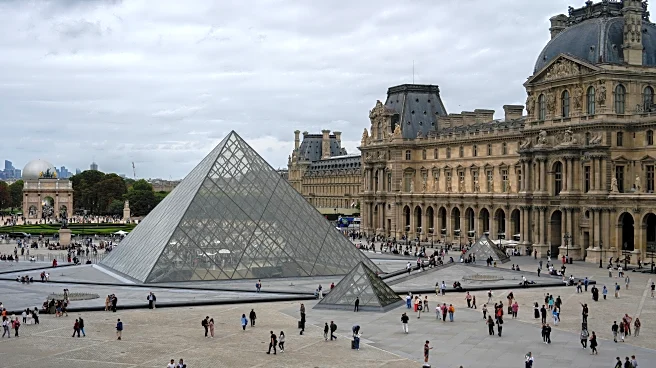What's Happening?
A significant theft occurred at the Louvre Museum in Paris, where thieves stole several items of historical and cultural importance from the Apollo Gallery, which houses the French Crown Jewels. The heist,
described as a 'national disaster' for France, involved the theft of nine items, including a sapphire diadem, necklace, and single earring worn by several queens, as well as an emerald necklace and earrings gifted by Napoleon to his second wife, Marie-Louise. The stolen items are considered to be of 'inestimable' value and are part of the imperial collection of France. The thieves targeted high-security display cases and managed to execute the theft in just seven minutes. While Empress Eugénie's crown was recovered near the scene, other items remain missing.
Why It's Important?
The theft of these crown jewels represents a significant cultural and historical loss for France, as they are deeply tied to the nation's heritage and pride. The stolen items, including pieces associated with Napoleon and his successors, are not only valuable but also irreplaceable artifacts that symbolize France's imperial past. The incident raises concerns about the security measures in place at one of the world's most famous museums and highlights the challenges in protecting cultural heritage from organized crime. The potential dismantling and sale of these recognizable pieces could lead to their permanent loss, impacting historical scholarship and public access to these treasures.
What's Next?
Authorities are likely to intensify efforts to recover the stolen items and apprehend the perpetrators. The high-profile nature of the theft may prompt increased security measures at museums worldwide to prevent similar incidents. Art recovery experts may be engaged to track the stolen jewels, which could be dismantled and sold on the black market. The French government and cultural institutions may also face pressure to enhance security protocols and reassess the protection of national treasures. Public and international attention on the case could lead to collaborative efforts to recover the stolen artifacts.
Beyond the Headlines
The theft underscores the vulnerability of cultural institutions to organized crime and the ongoing threat to global heritage sites. It raises ethical questions about the responsibility of museums to safeguard historical artifacts and the potential consequences of failing to do so. The incident may also spark discussions on the role of technology in enhancing security and tracking stolen art. Long-term, the theft could influence policies on cultural heritage protection and international cooperation in art recovery efforts.


